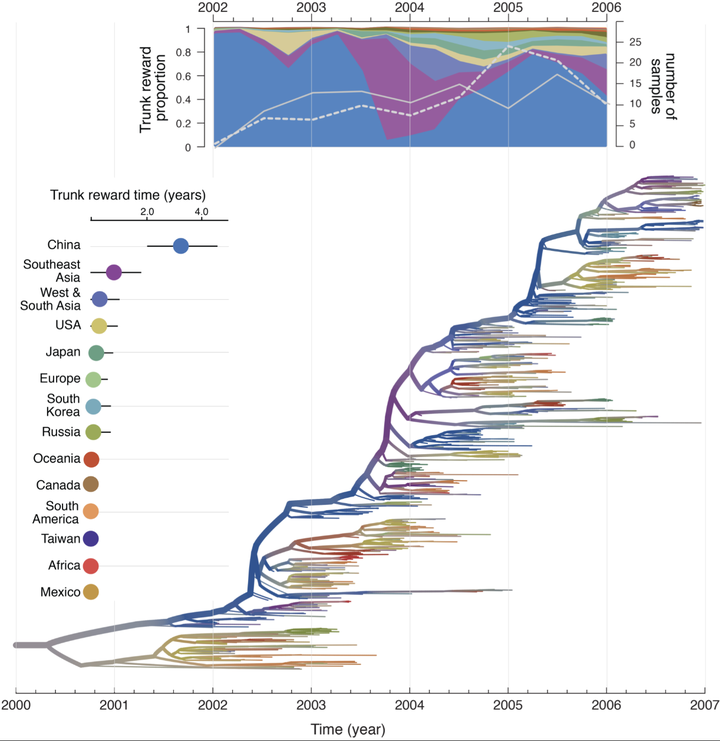Unifying viral genetics and human transportation data to predict the global transmission dynamics of human influenza H3N2
Abstract
What explains the geographic dispersal of emerging pathogens? Reconstructions of evolutionary history from pathogen gene sequences offer qualitative descriptions of spatial spread, but current approaches are poorly equipped to formally test and quantify the contribution of different potential explanatory factors, such as human mobility and demography. Here, we use a novel phylogeographic method to evaluate multiple potential predictors of viral spread in human influenza dynamics. We identify air travel as the predominant driver of global influenza migration, whilst also revealing the contribution of other mobility processes at more local scales. We demonstrate the power of our inter-disciplinary approach by using it to predict the global pandemic expansion of H1N1 influenza in 2009. Our study highlights the importance of integrating evolutionary and ecological information when studying the dynamics of infectious disease.
